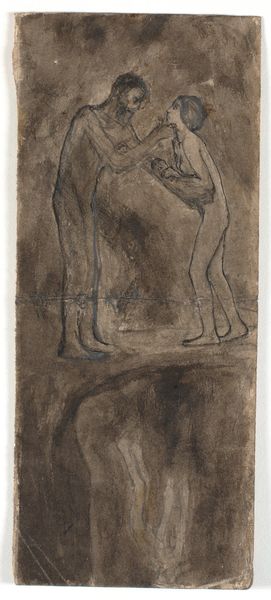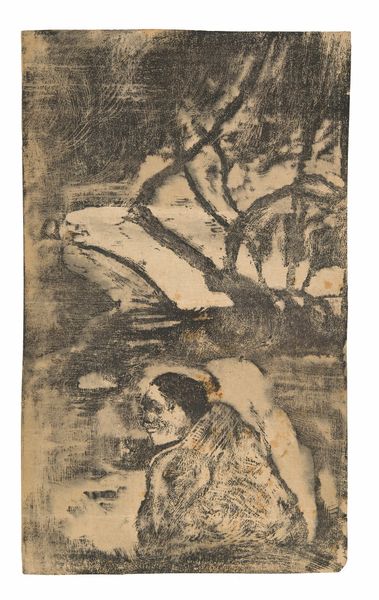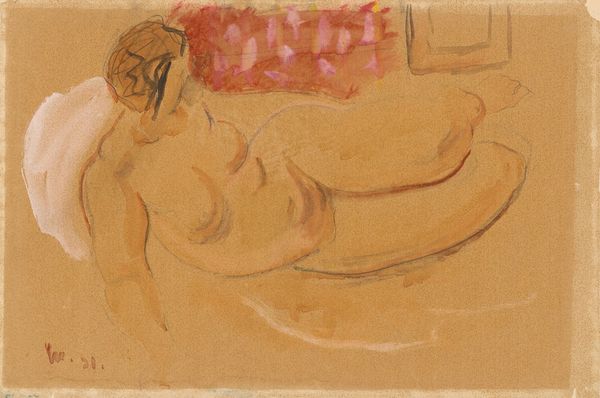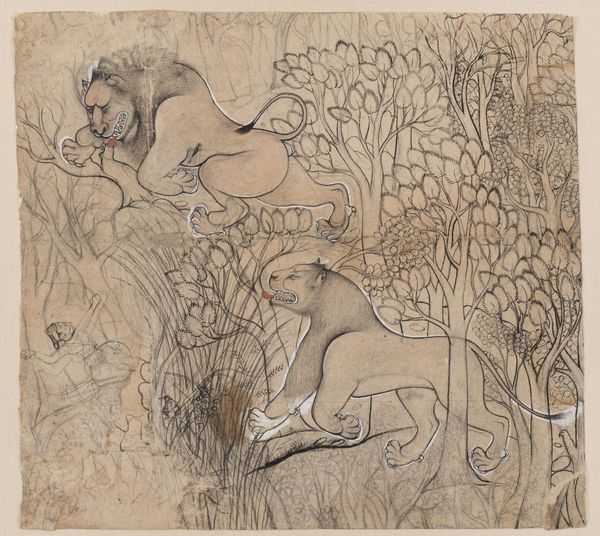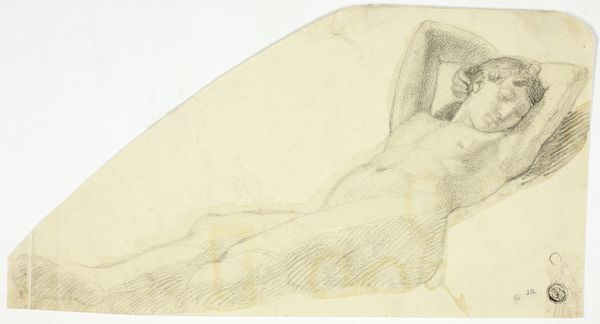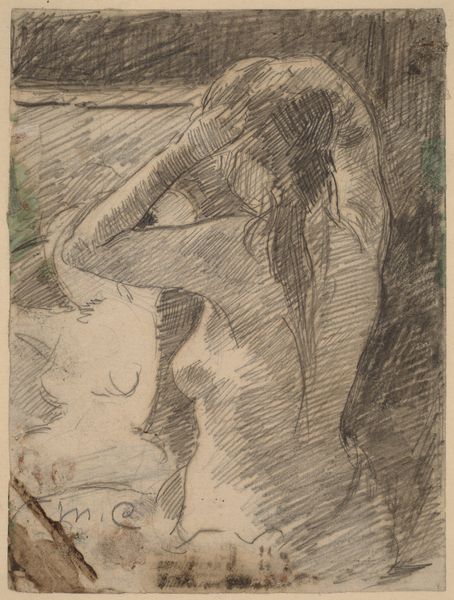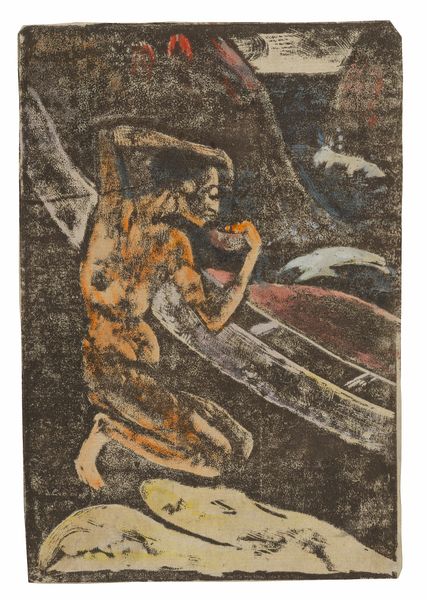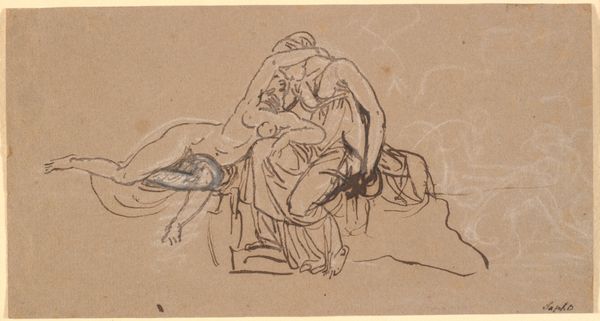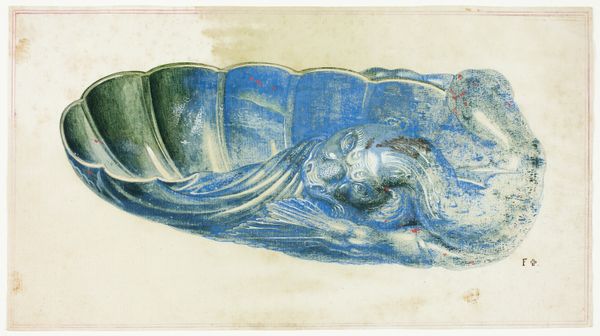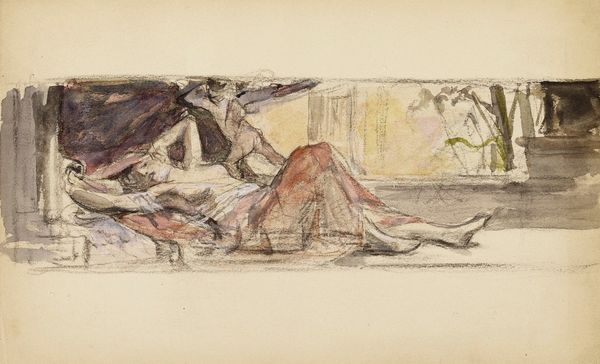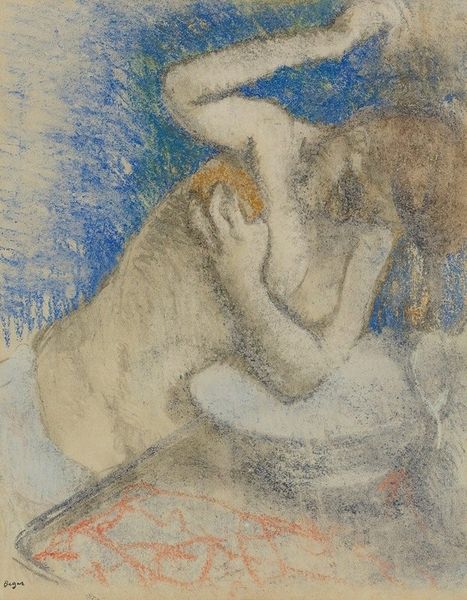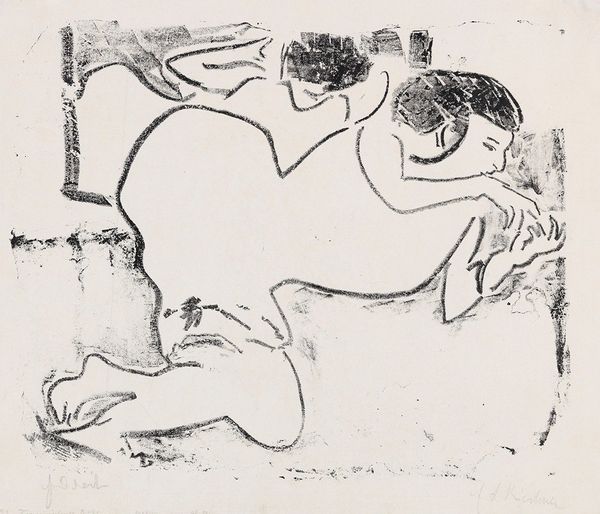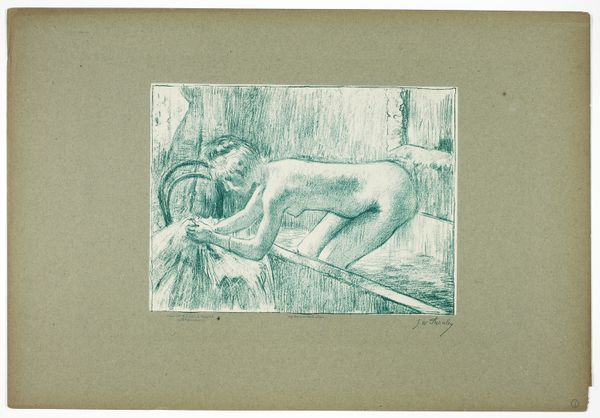
Dimensions: sheet: 32.7 x 59.7 cm (12 7/8 x 23 1/2 in.)
Copyright: National Gallery of Art: CC0 1.0
Editor: This is "The Rider," a watercolor and ink painting by Paul Gauguin from around 1902. The muted tones give it a dreamlike quality, almost like a fading memory. The composition, particularly the juxtaposition of the figure and landscape, feels unresolved. What do you see in this piece? Curator: I'm struck by the formal relationships at play here. Consider the use of watercolor; Gauguin coaxes surprising effects from the medium. Observe how he layers washes of color to create depth, though a depth that remains resolutely flattened, pictorial. It's a study in contrasts – the fluidity of the watercolor versus the relative precision of the ink, the implied movement of the rider versus the static quality of the composition. Do you find that the limited palette contributes to its enigmatic quality? Editor: Yes, definitely. The restricted range of colors brings a sense of unity, but also feels almost oppressive, contributing to the dreamlike, or even nightmarish, mood I initially perceived. Curator: Precisely. And note how the linear elements, the ink outlines, define the forms yet simultaneously flatten them. This creates a tension between representation and abstraction, pulling us back to the materiality of the work itself, the paper, the pigment. It's not merely *of* a rider; it is itself a carefully constructed object. Editor: That makes me see it differently. I was so focused on the subject matter that I overlooked the interplay of the materials. Thanks for highlighting that. Curator: The beauty of formalism lies in understanding that the subject is secondary. The *how* is everything. Editor: So true! This close analysis really unlocked a new way to appreciate Gauguin's artistry.
Comments
No comments
Be the first to comment and join the conversation on the ultimate creative platform.
